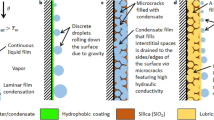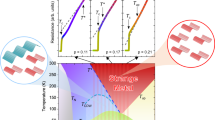Abstract
WHEN these metals are heated in a vacuous tube in such a way as to cause an extremely thin sublimate of the metal to condense upon the glass, the film so obtained will be found to possess a beautiful and strongly-marked colour. That this colour is not in any way due to the combination of the metal with any lingering minute traces of oxygen, is evident from the fact that vacuous tubes which have contained the clean and bright metal for years, and in which the metal has been frequently melted and rolled about, and even vapourized in places, and in which, therefore, it is impossible to conceive of any oxygen remaining, will continue to show the phenomenon whenever a portion of the contained metal is heated. The experiment may readily be made by introducing a freshly-cut fragment of the metal into a glass tube sealed at one end and drawn down to a narrow and thickened constriction near the middle. The tube is then drawn out at the open end and connected to a Sprengel pump. As soon as a good vacuum is obtained the tube is warmed throughout its entire length, the pump being still in operation, and the metal heated sufficiently high to cause it to melt and run out of the crust of oxide. When the exhaustion is again as complete as possible the tube is sealed off. The metal is once more melted, the whole tube being at the same time gently heated, and the molten mass allowed to filter through the constriction into the other portion of the tube. The vacuous condition of the tube allows of the metal freely running through an extremely fine aperture, and in this way it becomes perfectly separated from all dross. The tube is then sealed off at the constriction. On gently heating a minute fragment of the bright metal so obtained, by means of a small pointed gas flame, the coloured film of sublimed metal will at once be seen. Viewed by transmitted light, the colour of the film of sodium thus obtained is greenish-blue, inclining to green. Potassium gives a sublimate which is of a magnificent rich purple colour, while rubidium, on the other hand, forms a film which is a pure indigo blue.
This is a preview of subscription content, access via your institution
Access options
Subscribe to this journal
Receive 51 print issues and online access
$199.00 per year
only $3.90 per issue
Buy this article
- Purchase on SpringerLink
- Instant access to full article PDF
Prices may be subject to local taxes which are calculated during checkout
Similar content being viewed by others
Rights and permissions
About this article
Cite this article
NEWTH, G. Note on the Colours of the Alkali Metals. Nature 47, 55 (1892). https://doi.org/10.1038/047055a0
Issue date:
DOI: https://doi.org/10.1038/047055a0



